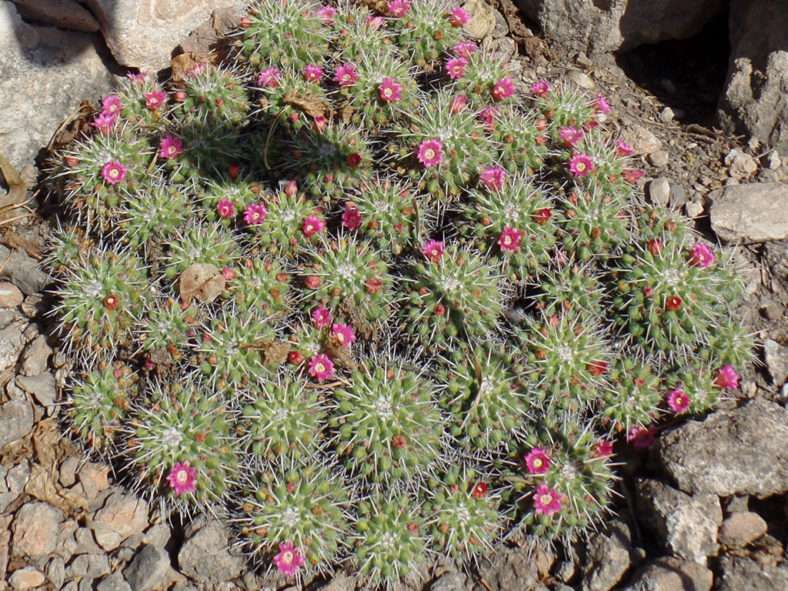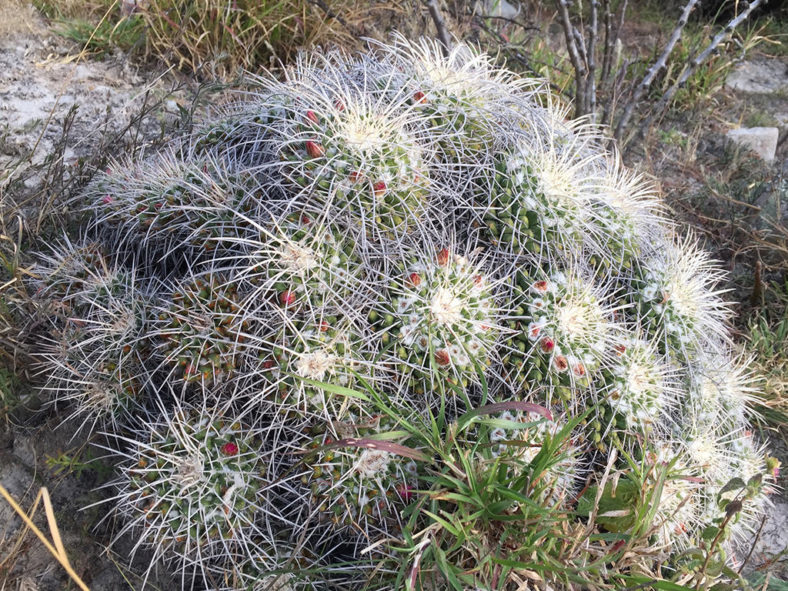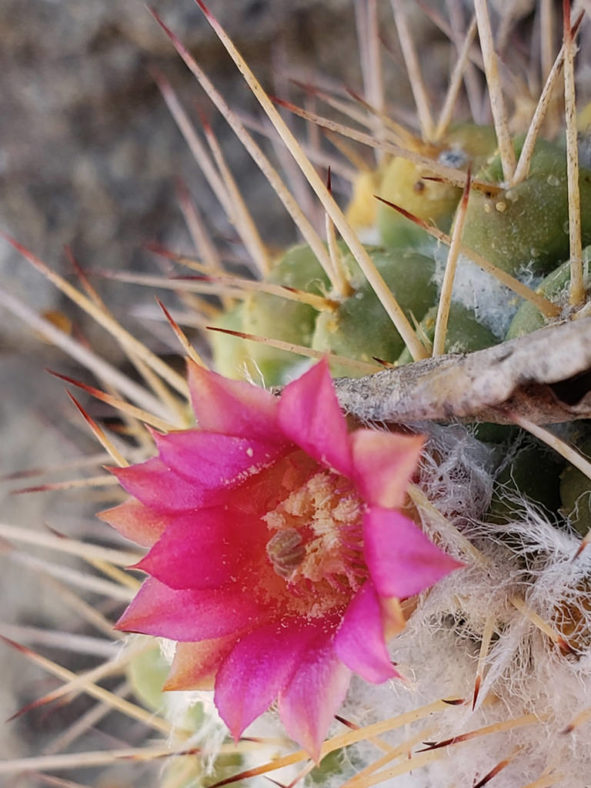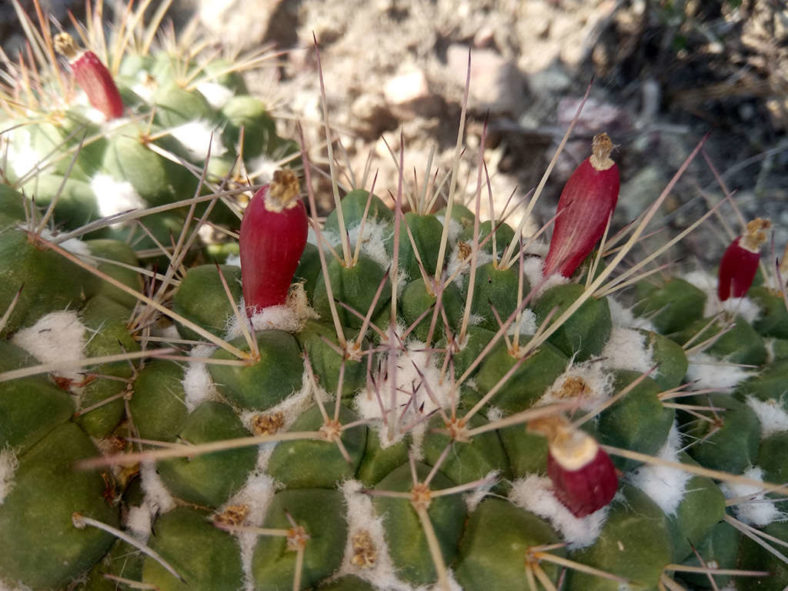Scientific Name
Mammillaria compressa DC.
Common Name(s)
Mother of Hundreds
Synonym(s)
Cactus compressus, Mammillaria angularis f. compressa, Mammillaria compressa subsp. compressa, Neomammillaria compressa
Scientific Classification
Family: Cactaceae
Subfamily: Cactoideae
Tribe: Cacteae
Subtribe: Cactinae
Genus: Mammillaria
Etymology
The specific epithet "compressa (kom-PRESS-uh)" means "compressed" and refers to the growth habit of the species.
Origin
Mammillaria compressa is native to Mexico. It occurs from Hidalgo northwards to Tamaulipas and westwards to Queretaro at elevations that range from 3,280 to 7,350 feet (1,000 to 2,240 m).
Description
Mammillaria compressa is a clump-forming cactus with cylindrical to club-shaped stems with spines that vary in length and arise from conical tubercles. It readily offsets, forming a large clump in time. The stems are gray-green to blue-green, often with tufts of white hair and bristles in the axils. They can grow up to 10 inches (25 cm) long and 4 inches (10 cm) in diameter. The spines are usually chalky white with brown tips. Each areole bears 4 to 6 radial spines, with the lower being longer. The central spines are absent.
The bright purple-pink flowers appear in spring, forming attractive rings around each stem. They can reach up to 0.6 inches (1.5 cm) in diameter. The fruits are red, club-shaped, and contain brown seeds.

How to Grow and Care for Mammillaria compressa
Light: Plant this cactus in an area of your garden that receives 4 hours of direct sunlight daily. If you are growing M. compressa indoors, place it near the brightest window in your home or office to ensure your cactus gets enough light. Place the pot on the balcony or in the garden for extra light from spring to fall if possible.
Soil: M. compressa requires a soil mix that provides root aeration and good drainage, whether grown outdoors or indoors. Use a commercial cactus potting mix, or create your own.
Temperature: This cactus is heat tolerant but is not a cold-hardy plant. M. compressa can withstand temperatures as low as 25 °F (-3.9 °C). USDA Plant Hardiness Zones 9b to 11b, 25 to 50 °F (-3.9 to 10 °C).
Watering: From spring to fall, water deeply and wait for the soil to dry before watering again. Never let the pot sit in water. Suspend watering in the winter.
Fertilizing: M. compressa can benefit from fertilizing during the growing season. Apply a water-soluble fertilizer for cacti and other succulents. Suspend feeding during the winter when the plant goes dormant.
Repotting: Repot every two or three years into a slightly larger pot. The best time to repot your M. compressa is late winter or early spring, but the repotting process can be done almost any time of the year.
Propagation: There are two easy ways to propagate M. compressa: by seeds or by dividing offsets. The best time to remove offsets is in spring and summer. Sow the seeds in late spring or summer.
Learn more at How to Grow and Care for Mammillaria.
Toxicity of Mammillaria compressa
M. compressa is considered non-toxic to both humans and pets.
Cultivars of Mammillaria compressa
Links
- Back to genus Mammillaria
- Succupedia: Browse succulents by Scientific Name, Common Name, Genus, Family, USDA Hardiness Zone, Origin, or cacti by Genus
Photo Gallery
Click on a photo to see a larger version.


